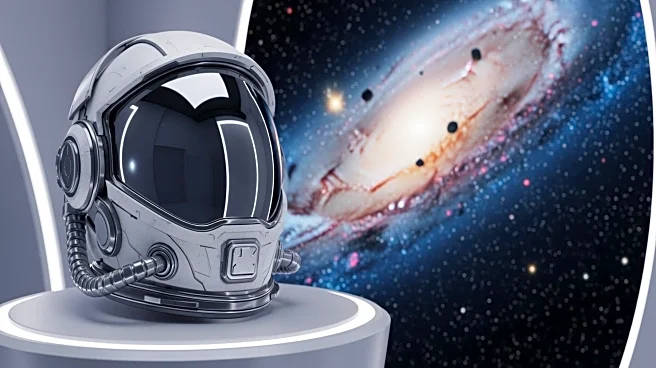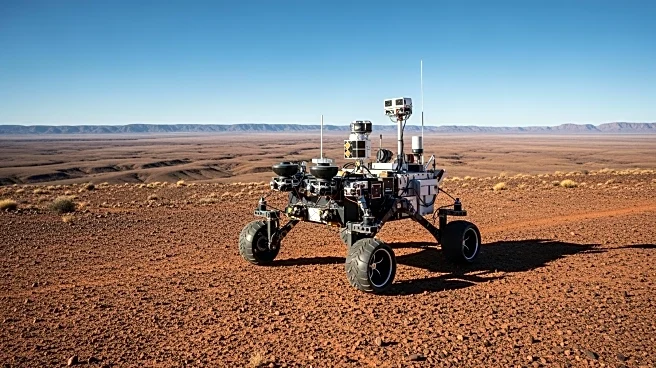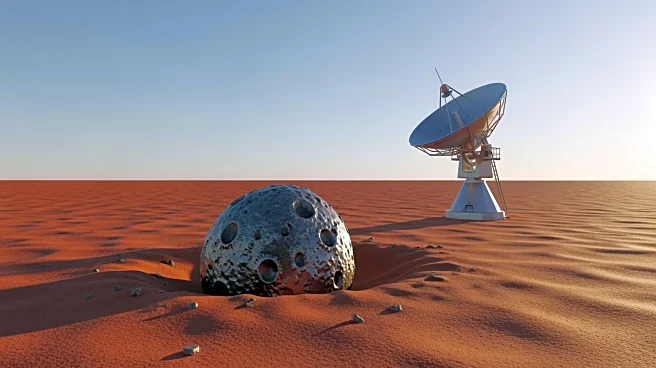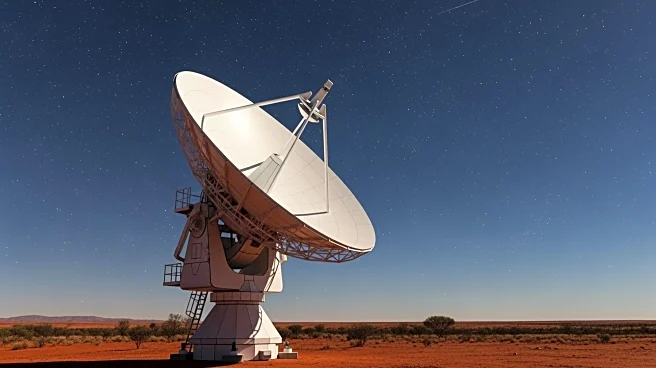What's Happening?
A flaming piece of space debris was discovered in Western Australia's Pilbara region, identified as likely originating from a Chinese Jielong-3 rocket launched in September. The debris, made of carbon fiber, was found by mine workers and is suspected
to be a propellant tank or pressure vessel from a space launch vehicle. The Australian Space Agency is conducting further analysis to confirm its origin. This incident highlights the growing issue of space junk, with more than 10,000 active satellites and up to 40,000 pieces of space debris larger than 10 centimeters currently orbiting Earth. The disposal of space junk typically involves re-entry into the atmosphere, where it burns up due to friction and heat. However, some debris, like fuel tanks, can reach the ground intact due to their high melting point materials.
Why It's Important?
The increasing presence of space junk poses significant challenges for space management and environmental safety. As the number of satellites in low Earth orbit is expected to rise to 70,000 by the end of the decade, the risk of debris causing harm on Earth grows. Space junk can impact the ozone layer, creating harmful particulates that affect ultraviolet radiation filtration. The uncontrolled re-entry of debris can lead to unexpected landings, as seen with the Chinese rocket stage in India. Effective end-of-life planning and international collaboration are crucial to mitigate these risks and ensure sustainable space usage. The European Space Agency's Zero Debris Charter aims to promote debris-neutral missions by 2030, highlighting the need for improved debris management strategies.
What's Next?
The investigation into the ownership of the space debris found in Australia will determine liability under the 1967 Outer Space Treaty, which holds the launching state responsible for any damage caused. If confirmed as Chinese, negotiations may involve its return or disposal, similar to past incidents with India. The focus on better end-of-life planning for spacecraft is critical, with new technologies being developed to extend satellite life and reduce atmospheric pollution. International efforts, such as the Zero Debris Charter, aim to address the growing space junk problem, promoting sustainable practices and collaboration to ensure future generations can access space safely.
Beyond the Headlines
The discovery of space debris in remote areas raises ethical and environmental concerns, particularly in regions already impacted by human activities like mining. The lack of immediate harm from the debris landing in Australia suggests limited liability issues, but it underscores the need for responsible space exploration and debris management. The development of new materials, such as wood, for spacecraft construction could reduce pollution and improve sustainability. As space becomes increasingly crowded, the importance of international cooperation and technological innovation in managing space debris will continue to grow, shaping the future of space exploration and environmental protection.














